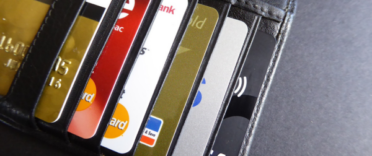 ISAs can be a great way to maximise your savings or investments, as all the money you earn from the account will be tax-free. There are limits on how much you can pay in and some limits on how many accounts you can open, but the benefits can be a really useful boost. There is more than one type of ISA, but don’t be overwhelmed by the choice. The perfect ISA for you is out there. This article will explain each type of ISA in detail and help you identify the right option for your financial situation and future plans.
ISAs can be a great way to maximise your savings or investments, as all the money you earn from the account will be tax-free. There are limits on how much you can pay in and some limits on how many accounts you can open, but the benefits can be a really useful boost. There is more than one type of ISA, but don’t be overwhelmed by the choice. The perfect ISA for you is out there. This article will explain each type of ISA in detail and help you identify the right option for your financial situation and future plans.
What are the different types of ISA?
Opening an ISA means choosing from one of four main types; Cash ISA, Stocks and Shares ISA, Lifetime ISA and/or an Innovative Finance ISA. Each has its own perks, advantages and disadvantages, though all benefit from the same tax-free gains. Some even have their own sub-categories, which means there should be something to suit every saver or investor.
The type of ISA that will help you the most will depend on what you are saving or investing for, how accessible you want your money to be and your appetite for risk. If you can match up with the right ISA, you will take a big step closer to maximising your money.
Additionally, you could choose to save or invest up to £9,000 per tax year in a Junior ISA, an account designed to help adults build up a pot of savings or investments for those under 18. We discuss Junior ISAs in more detail later in this article or you can check out our article 'Best Junior ISAs in the UK'.
What are the different types of Cash ISAs?
A Cash ISA is just like a standard savings account, but with the added bonus of the tax-free ISA wrapper. The money you save accrues interest and builds over time. There is little risk to a Cash ISA, as your balance cannot go down if the interest rate is positive. The worst-case scenario would be your provider going bust, but even then you would be protected by the FSCS (Financial Services Compensation Scheme). The FSCS covers £85,000 of your money per financial institution if your provider stops trading.
As with all ISAs there is a limit on how much you can pay in. That amount is £20,000 across all types of ISA for the 2024/25 tax year, though you may be able to pay in more if you have a flexible Cash ISA. Previously, you could only open one new Cash ISA per tax year as well as only pay into one Cash ISA per tax year, however, this restriction was removed on the 6th April 2024. We explain the changes to ISA rules in our article 'ISA rule changes for 2024'.
Below, we explain the basics of the four main types of Cash ISA.
Easy-access Cash ISAs
This account gives you flexible access to your savings. The interest rate can go up and down, but there are no additional restrictions on moving your money. An easy-access Cash ISA will suit you if you will need to dip into your savings pot regularly, or you only want to save in the short term. Find the best easy access Cash ISA by checking out our regularly updated article dedicated to the 'Best easy access Cash ISAs’.
Fixed-rate Cash ISAs
Your rate of interest will remain fixed for a specified length of time, but your money will be effectively locked away. You can still access the cash in an emergency, although that will mean paying a penalty. Sometimes it can be worth taking the hit and paying the penalty if your interest rate is particularly low and higher-rate options are available. A fixed-rate Cash ISA will suit savers looking to build up funds for a specific future purchase or who know they won’t need the money for a set period of time.
Find the best fixed-rate Cash ISA by checking out our regularly updated article dedicated to the 'Best fixed-rate Cash ISAs’.
Halal Cash ISA
A Halal Cash ISA is a Sharia-compliant savings account that pays an Expected Profit Rate (EPR) instead of interest. This means that you can earn money without benefiting from interest payments, which may conflict with your religious beliefs. Keep in mind that the EPR is not guaranteed.
Find out more about Sharia-compliant banking in our article 'Are ISAs Halal?’.
Lifetime Cash ISA
Lifetime Cash ISAs – also called Cash LISAs – are designed to help savers build a deposit for their first home or a fund for retirement. On top of the interest rate you will also benefit from a government bonus of 25% on all deposits, though you can only pay in a maximum of £4,000 in a tax year. You can only use your cash LISA once you are 60, unless it is to fund a deposit for a first home that costs £450,000 or less. For any other spending, you will need to pay a 25% withdrawal charge. You can pay into both a Lifetime Cash ISA and any other Cash ISA in the same tax year.
If you need more detail on the different types of Cash ISA, read our dedicated article ‘What is a Cash ISA?’.
Stocks and Shares ISAs
A stocks and shares ISA is a tax-free investment account. Whereas a Cash ISA holds cash, a Stocks and Shares ISA holds stocks and shares. You can set one up with a bank, a stockbroker or one of a whole host of online providers. Your account can hold lots of different types of investments, the exact combination will be down to your choices, your risk profile and what your provider offers. You can only open one new Stocks and Shares ISA per tax year. You will have the option to invest money in a lump sum straight away, invest steadily over time or do a combination of both.
Choosing the right Stocks and Shares ISA can be a bit more complicated than picking a Cash ISA. This is because the best Cash ISA option often boils down to which provider is offering the best interest rate and the right kind of access to your money. Stocks and Shares ISAs do not provide guaranteed returns, so it can be harder to compare accounts. You can find out more on how to judge providers in our article ‘The best Stocks and Shares investment ISA’.
Stocks and Shares ISAs can offer greater returns than Cash ISAs, but your money will be at risk. Investments can go up and down, though you will be protected by the FSCS if your provider goes bust. You can read our article ‘The best-performing stocks and shares ISA’ to see how growth can vary from year to year.
Due to the fluctuating nature of investments, a Stocks and Shares ISA will not be for everyone. However, if you are investing over a long period of time, it has the potential to be much more effective than a Cash ISA. Read our article ‘Are Stocks and Shares ISAs really worth it?’ to learn more.
If you decide that a Stocks and Shares ISA is the best choice for you, check out ‘How to set up a stocks and shares ISA – A step-by-step guide’ to help you get started.
Lifetime ISAs
Lifetime ISAs – often shortened to LISAs – pay you a government bonus of 25% on the money you pay in. Deposits are capped at £4,000 per tax year, so if you add £4,000 to your LISA you will get a £1,000 bonus from the government, usually paid at the end of the month. Like all ISAs, the LISA is tax-free. You can open a Stocks and Shares LISA or a Cash LISA, which means that you can get investment growth or interest on top of the bonus payments.
The main downside of a Lifetime ISA is that you can only access your money once you are 60 years old unless you are using it to fund a deposit for your first home. The property purchase will have to be for £450,000 or less.
LISA’s were introduced to help prospective first-time buyers save up to buy a property and to help save for retirement. If you make a withdrawal before you reach 60, you will be hit with a 25% withdrawal charge. A conveyancer will organise accessing the funds if you are buying your first home, so you won’t need to make a withdrawal in that scenario. For anyone planning on buying a home with someone else, both buyers can use a LISA if they are eligible. If only one person is eligible, that person can still put their full LISA towards their share of the deposit.
You need to be over 18 and under 40 to open a LISA, and under 50 to pay money in. Once you hit 50, you can no longer make deposits and get the government bonus, but what you have in the account will continue to grow with interest or investment performance.
We have more information on Lifetime ISAs in our article ‘Lifetime ISAs explained – are they the best way to save?’.
If you think a Lifetime ISA is the best type of ISA for you, head to our ‘Compare the best and cheapest Lifetime ISA providers’ article.
Innovative Finance ISAs
Innovative finance ISAs are a tax-free way of investing through peer-to-peer loans, also called P2P lending. Your ISA provider will match you up with borrowers – who could be individuals or businesses – and you act as an investor. The potential returns can be much higher than traditional savings accounts, but the money you invest will be at risk.
You are essentially financing an unsecured loan, so there is a chance the borrower will default. This prospect is mitigated by the provider’s borrower selection process and spreading your investment across multiple borrowers. However, there is still the chance you could lose your money. If your provider goes bust, you will not be covered by the FSCS.
Junior ISAs
A Junior ISA – you may also see it referred to as a JISA – is a type of tax-free account designed to help adults build up savings for under 18s. Junior ISAs are opened by an adult on behalf of a child, so any money deposited cannot be withdrawn by the person who paid it in. Instead, once the child named on the account turns 18, it becomes a standard ISA and they can withdraw the money.
The money held in a Junior ISA is tax-free, just like other ISA accounts. Unlike other ISA accounts, the deposit limit is £9,000 per tax year. This can be split between the two different types of junior ISA: a Junior Cash ISA and a Junior Stocks and Shares ISA.
It is important to remember that the £9,000 allowance applies to the child named on the account, not the adult paying into it. This means that saving or investing into a child’s Junior ISA does not count towards your own ISA limit of £20,000.
16 and 17-year-olds are able to hold an adult Cash ISA too. This means that they can use their £20,000 limit in addition to any money paid into a Junior ISA on their behalf.
You can see what we think are the best Junior Stocks and Shares options in our article ‘Best Junior stocks and shares ISA’.
How to choose the best ISA for you
The best type of ISA for you will depend on whether you want to invest or save, how easily you want to be able to access your money and what you eventually want to use that money for. The tax-free benefits of ISAs have the potential to make a huge difference when it comes to growing your savings, but that will not be true for everyone. Think about what limitations having an ISA will put on your money and how that compares to other types of account.
It is important to remember that even though ISA rules can seem restrictive, there are some scenarios where you can deposit additional money and open extra accounts. Read our articles on ‘What is a flexible ISA?’ and 'ISA transfers explained - everything you need to know' to find out more.





